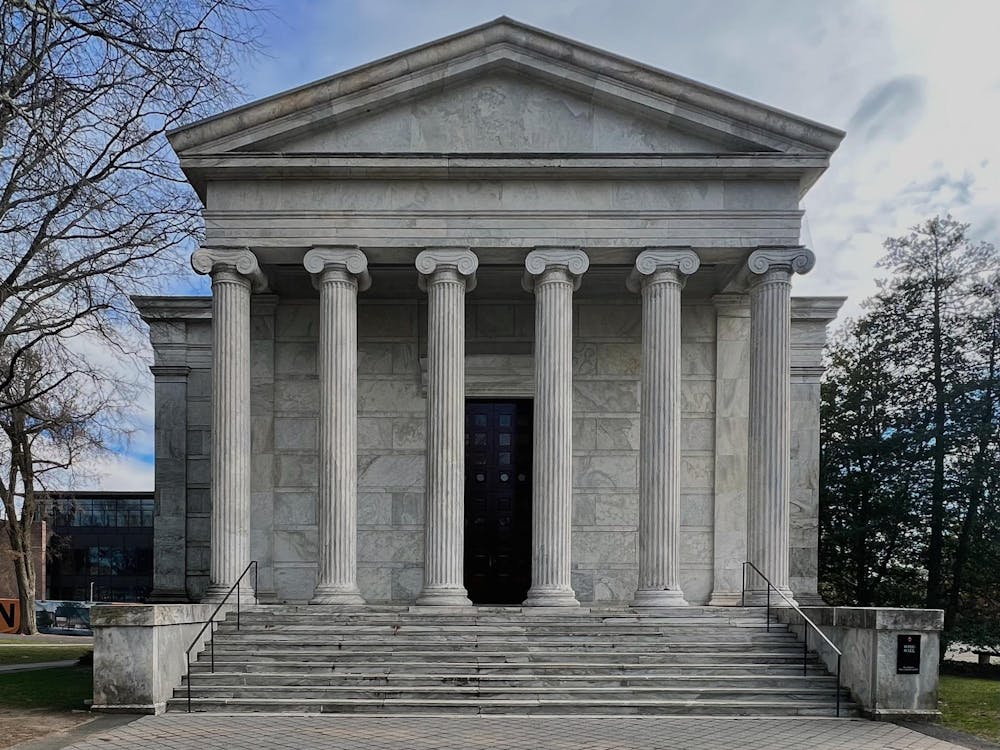While Princeton, Harvard and Brown each are engaged in presidential selection processes steeped in tradition, Princeton's search marks a significant break from Ivy League and University precedent.
Entering the world of executive decisions, students will sit beside members of the University Board of Trustees on the 18-member presidential selection committee.
"I think what [Harvard and Brown universities] have is the more conventional model," Vice President for Public Affairs Robert Durkee '69 said. "Maybe [our committee] is somewhat progressive. The trustees do make the final decision. What you're trying to do is achieve consensus."
Harvard and Brown have established selection committees composed solely of trustees. Students and faculty members have been included in advisory committees but do not serve on the selection committees themselves.
USG president PJ Kim '01 said he was impressed Princeton is affording students such a significant opportunity to make important decisions. "Other universities don't usually involve students," Kim said. "I'm pretty pleased with it. We should be significantly represented."
Kim noted that the selection process will allow for significant involvement from the entire University community. "It's not the committee picking the president, it's the committee representing the students and faculty," he said.
But former University President Robert Goheen '40 said Princeton used a similar system to that of Brown and Harvard when he, William Bowen GS '58 and President Shapiro were selected.
Goheen said he preferred the former selection process, which involved one committee composed of faculty and students and another of trustees. He commented that the selection of the president, according to University tradition, is the trustees' chief responsibility.
"The most important thing the trustees probably do is to choose the president," Goheen said. "I myself think that is a preferable arrangement. The trustees have the ultimate responsibility for who is going to be president. They should seek — and do seek — advice on that, but that should be advice and not a decisive voice."
Though no students were on the last selection committee, Durkee emphasized that the trustees seriously considered student and faculty feedback when they selected Shapiro. "The actual committee itself was composed solely of trustees. They closely worked with students and faculty," he said. "It operated as a single group. It's not like the trustees met alone all of the time."
GSG chair Lauren Hale, the graduate student representative on the selection committee, said she too is enthusiastic about student participation in the decision.
"I definitely think that it is great. It shows a lot about Princeton's efforts to include students' input," Hale said. "I went to Harvard undergrad and have talked to some of my friends there. They were surprised that students play such a large role."

Though students will contribute extensively to the selection process, Shapiro said he will offer only minimal advice. "I've decided I should take no role in the selection of my successor. That's a matter for the board of trustees," Shapiro said in an interview Saturday.
Goheen said he played only a minor role in the selection of his successor, William Bowen, who had been serving as University provost for four years. "I told the trustees I thought they should have an independent choice, and I would not be a part of the committee," Goheen said. "I told the chairman of the committee they had right on the grounds, as my number two person, an ideal candidate, who was William Bowen. That was my only intervention."
Though students and faculty will have strong voices in the selection process, ultimately the full board of trustees will confirm the new president, Durkee said.







